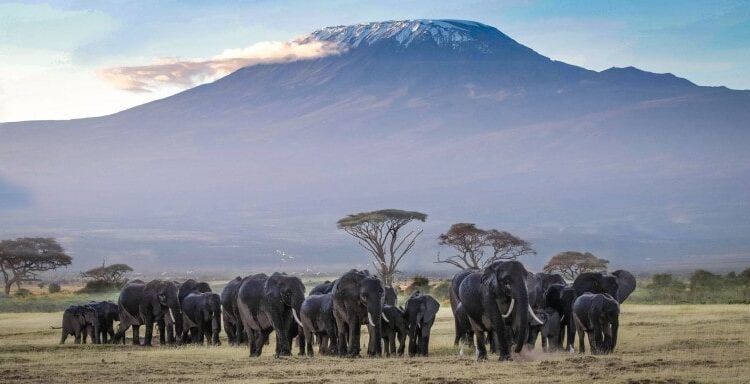Africa is one of the most magical places on Earth to visit. The continent has so much to offer. From incredible waterfalls to magnificent wildlife national parks.
Although, that’s not all Africa has to show. There are many peak ranges in the country with amazing views.
So, if you’re interested in finding out more about the mountains in Africa, you’ve come to the right place. In this article, we’ll walk you through some of the most famous peaks on the continent.
We’ll also cover the best time to visit each one of these locations.
Mountains in Africa
As we all know, Africa is the second-largest continent in the world and is home to many amazing sights.
There are waterfalls, rainforests, and, of course, mountains. People from all over the globe visit the continent to see these amazing sights.
So, without further ado, let’s look at the most notable peaks in Africa.
1. Mount Kilimanjaro
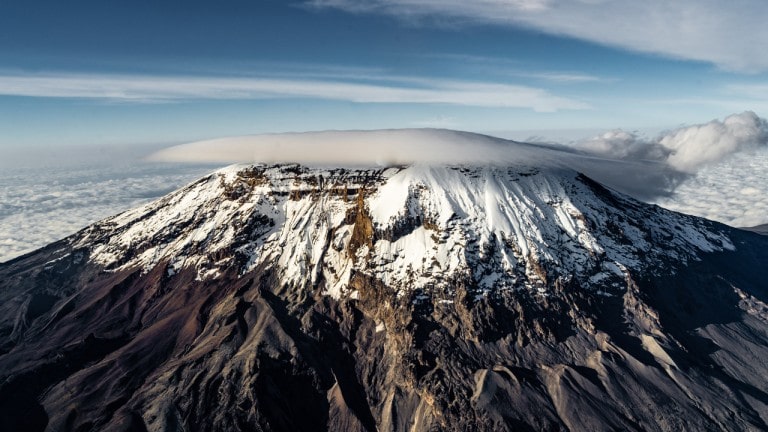 Image source: Google
Image source: Google
Mount Kilimanjaro is one of the world’s most famous peaks. That’s because it’s the tallest mountain in Africa.
Not only that, but it’s also the highest free-standing peak above sea level in the world. It reaches about 19,340 feet straight into the sky.
The structure is a dormant volcano, with three volcanic cones. These include Kibo, Shira, and Mawenzi.
Other than that, the Kilimanjaro National Park surrounds the mountain. This makes it the ideal location for a fun getaway.
The best time to visit Mount Kilimanjaro is in February. Yet, if you prefer a summer trip, then you can head out there in September.
2. Mount Kenya
 Image source: Google
Image source: Google
Mount Kenya is the second-tallest mountain in Africa, right after Mount Kilimanjaro. You’ll find the structure nestled between Central and Eastern Kenya.
Many people think that the mountain gets its name from the country. Yet, it’s the other way around. The peaks predate Kenya, which means they held the title first.
Moving on, Mount Kenya has a few different peaks. The highest points include:
- Batian (17,057 feet)
- Nelson (17,021 feet)
- Point Lenana (16,355 feet)
There was an ice cap that used to cover the top of Mount Kenya. Although, because of global warming, this has turned into 11 small glaciers.
When planning a trip to Mount Kenya try to visit between December and March. The weather during these months should be spectacular.
3. Mount Stanley
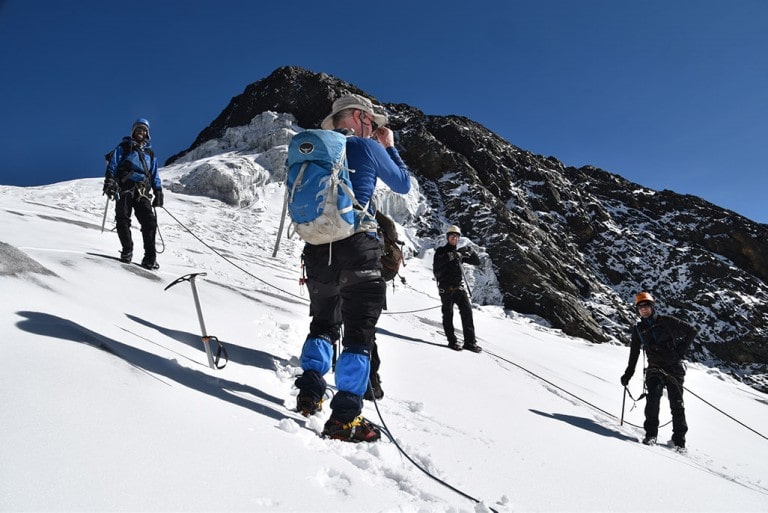 Image source: Google
Image source: Google
Mount Ngaliema, or as it’s more commonly known Stanley, is the third-tallest mountain in Africa. The structure gets its name from famed journalist and explorer, Sir Henry Stanley.
On top of that, it’s part of the Rwenzori Mountains National Park.
Mount Stanley has two main summits and a few peaks. Some of the most notable include:
- Margherita (16,763 feet)
- Alexandra (16,703 feet)
- Albert (16,690 feet)
- Savoia (16,330 feet)
- Ellena (16,300)
There are two periods during the year when Mount Stanley is perfect for hiking. You can visit the area between June and August, or December and February.
That means you should have plenty of opportunities to schedule your trip.
4. Mount Meru
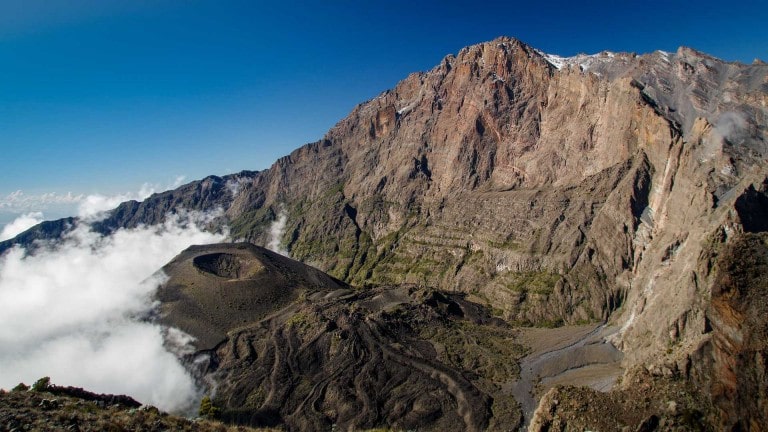 Image source: Google
Image source: Google
While Kilimanjaro may be the most famous mountain in Tanzania, it’s not the only one. Several other peaks in the area are a must-see.
One of these is Mount Meru. It’s also a dormant volcano, with several cones and craters.
Besides that, it sits at the center of Arusha National Park. That means everywhere you look from the mountain, you should be able to see the savannas down below.
These woodlands host diverse wildlife, with over 400 species of birds and monkeys.
To ensure you get the most out of your trip, try to visit in March. If you can’t make it, then go for October.
5. Mount Karisimbi
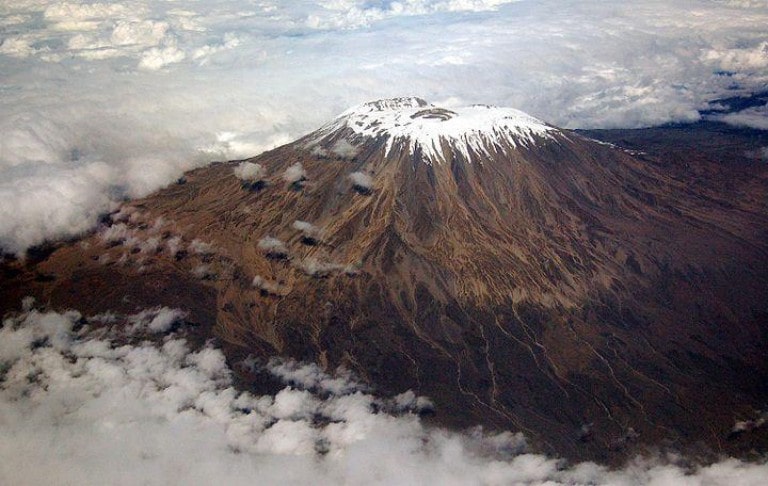 Image source: Google
Image source: Google
On the border between Rwanda and the Democratic Republic of Congo, you’ll find a mountain range. The highest peak in this lineup is Mount Karisimbi.
It’s an active volcano that soars about 14,787 feet into the air.
The name of the mountain comes from the Rwandan word for snow. That’s because, during the dry seasons from June to August, there’s a veil of snow on the peak.
In the area, you’ll also find the Karisoke Research Center. This is where Dian Fossey spent her time observing gorillas.
So, if you’d like to see one of your own, plan your visit in July. The weather should be warm enough for the primates to be out and about.
6. Mount Elgon
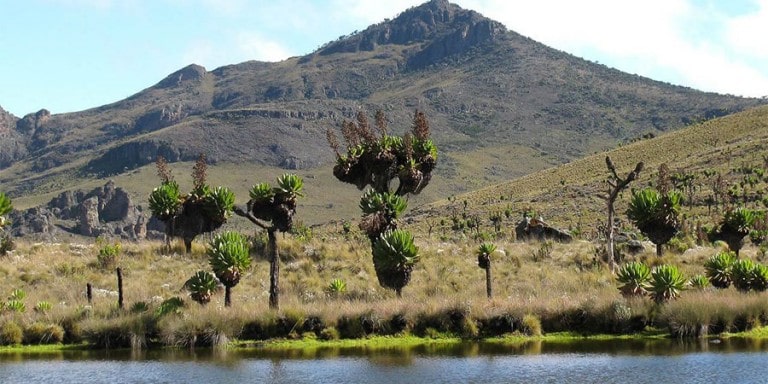 Image source: Google
Image source: Google
Mount Elgon sits on the border between Uganda and Kenya and it’s one of the oldest volcanoes in East Africa.
Thankfully, it’s extinct, which means it no longer has a magma supply. Because of that, the area should be safe to visit.
Even though the mountain sits on the border, the highest peak is in Uganda. The natives call it Wagagai and it stands 14,177 feet tall.
Besides that, there are a few other notable peaks. These include:
- Sudek (14,114 feet)
- Koitobos (13,852 feet)
- Mubiyi (13,816 feet)
To top it all off, the area is home to special wildlife. For example, it’s host to the unique African bush elephants.
The best time to visit Mount Elgon is the dry season between June and August.
7. Ras Dashen
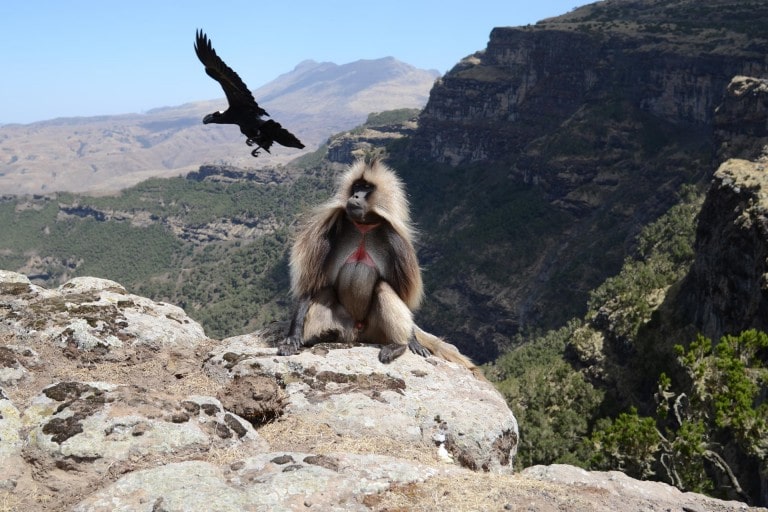 Image source: Google
Image source: Google
If you’re planning a trip to Ethiopia, then make sure you stop by Ras Dashen. It’s the tallest mountain in the area, standing at 14,930 feet high.
Climbing to the top of the peak will give you an incredible view of the country. Not only will you see the several ravines on the side of the mountain, but also lush greenery.
That’s because Ras Dashen is in the center of the Simien Mountains National Park.
You’ll start your journey walking through stunning gorges before you make it to the peak. Then, the trip to the top of the mountain can take about two days.
This may seem like a long time, but the view from the top is well worth the effort.
Most tourists prefer to visit Ras Dashen between September and December. That way, they avoid the rainy season and enjoy a cool breeze.

